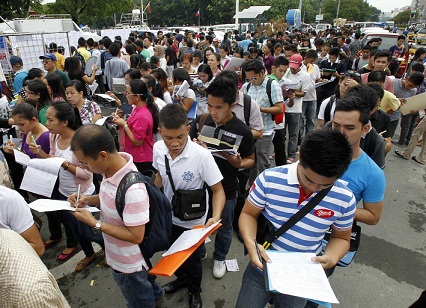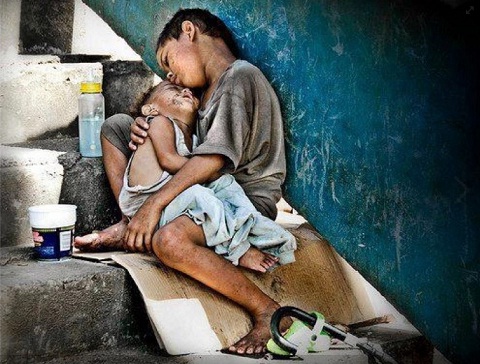I thought I and my friends are the only ones who have not been showered with the financial blessings the government is boasting of.
Then even as international financial firms continue to hail the Philippines as “s the strongest performing economy in Asia today, “reports came out of a Triple whammy: Exports and Foreign Direct Investments down and unemployment up.
ABS-CBN’s Coco Alcuaz reported that “Unemployment rose to a 3-year high as the total number of employed persons dropped, contrary to a government claim that employment is rising just not as fast as the workforce. The jobless rate rose to 7.5% in April, the highest since April 2010.”
“At the same time, exports fell again in April, as declines in sales of chemicals and some manufactured products…. offset a steadying in electronics. The National Statistics Office reports exports dropped almost 13% to $4 billion.
“Also, foreign direct investment was negative in March, meaning foreigners pulled out more than they put in. In March, they put in $56 million and withdrew $73 million, a net withdrawal of $17 million.”
This triple whammy I can very well understand. My pocket understands it very well.
Results of the latest labor force survey by the government’s NSO showed that unemployment rate as of April 2013 was 7.5 percent , up from 6.9 April last year.
How many Filipinos are jobless at 7.5 percent unemployment rate? NSO put the population of 15 years old and over at 64,028,000. Seven point five percent equals 4,802,100 jobless Filipinos.
NSO said the increase in the number of unemployed were significant among two groups: “ These were the farmers, forestry workers and fishermen whose number decreased to approximately 4.960 million in April 2013 from 5.398 million in April 2012, or a decrease of about 438 thousand workers; and the laborers and unskilled workers whose number dropped by approximately 384 thousand. “
These are numbers that represent Filipinos who have to eat three times a day, with children who have to go to school. God forbid if they get sick.
What happened then to the upbeat credit ratings?
University of the Philippines Former Budget Secretary Benjamin Diokno said the Aquino government is so “obsessed with achieving credit ratings upgrade at the expense of real, jobs-generating growth.”
International credit companies give the country good credit ratings because it has reduced its borrowings and expenditures. No spending on infrastructure like roads, airports which should have helped perk up the economy.
The lack of infrastructure resulted in decrease in foreign investments (why would foreigners invest in a country where airports, roads, transport are bad and inefficient?). Lack of foreign investment equals fewer jobs. Less jobs means more poor Filipinos.
But we have good credit ratings, the government boasted. Makakain ba yan?

